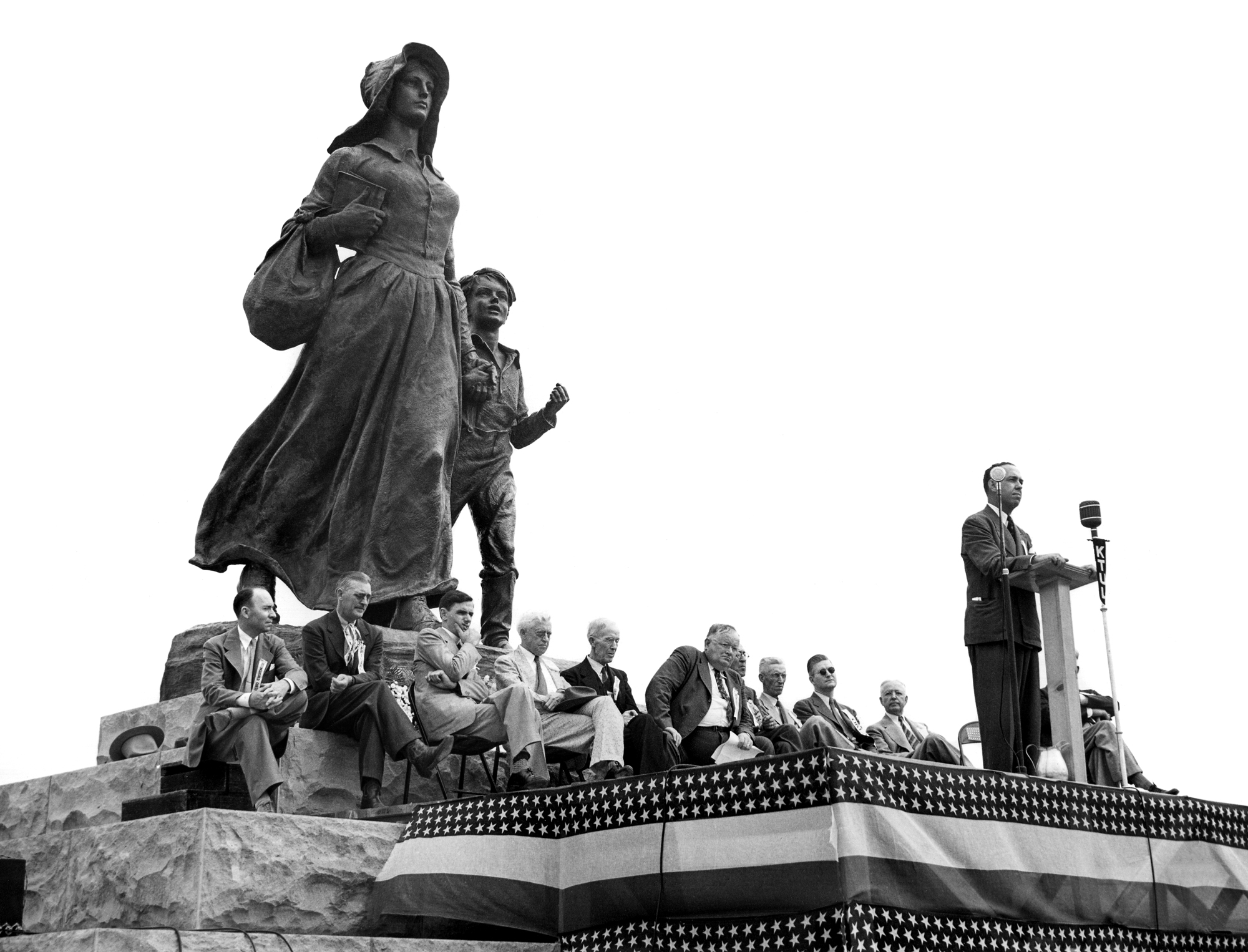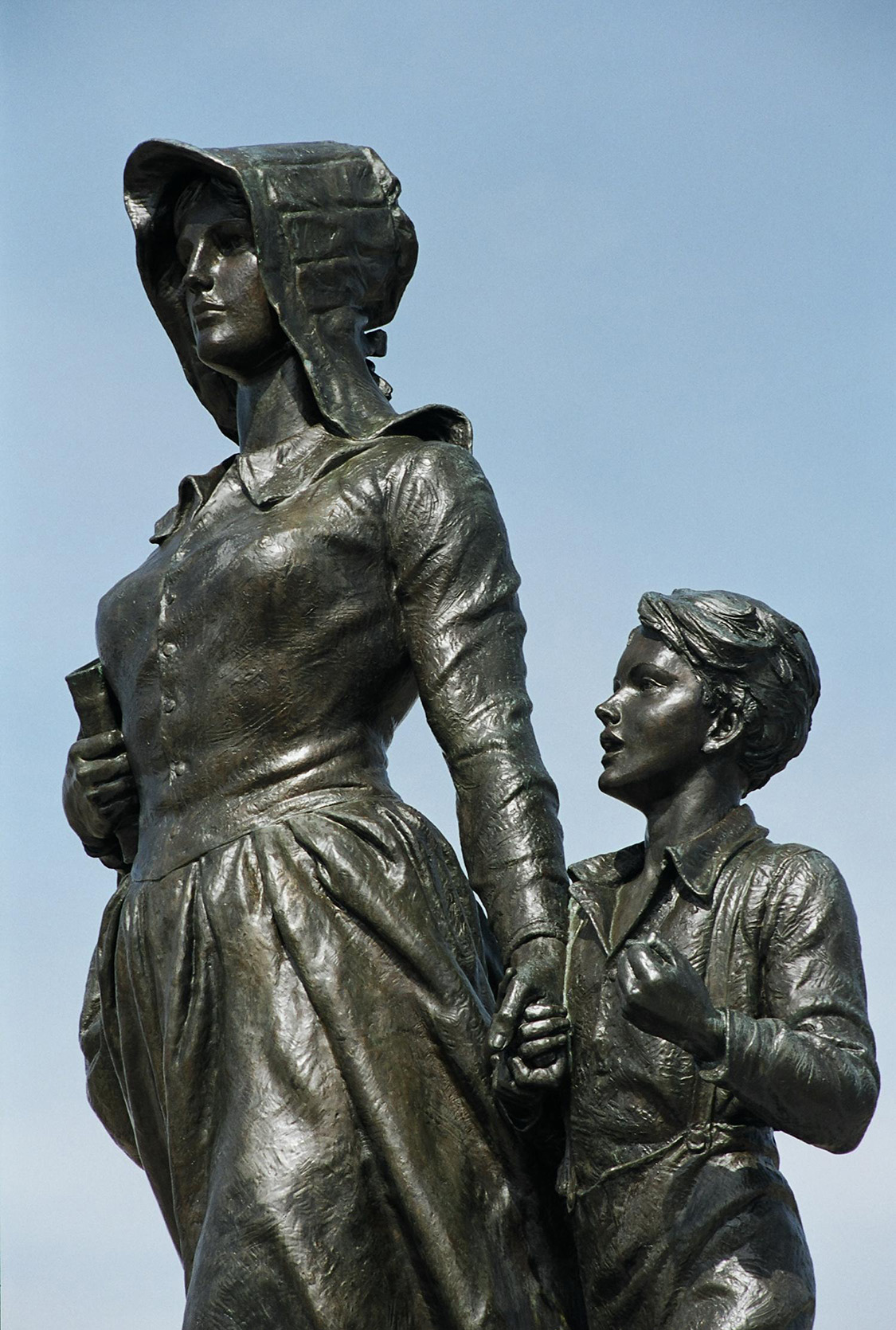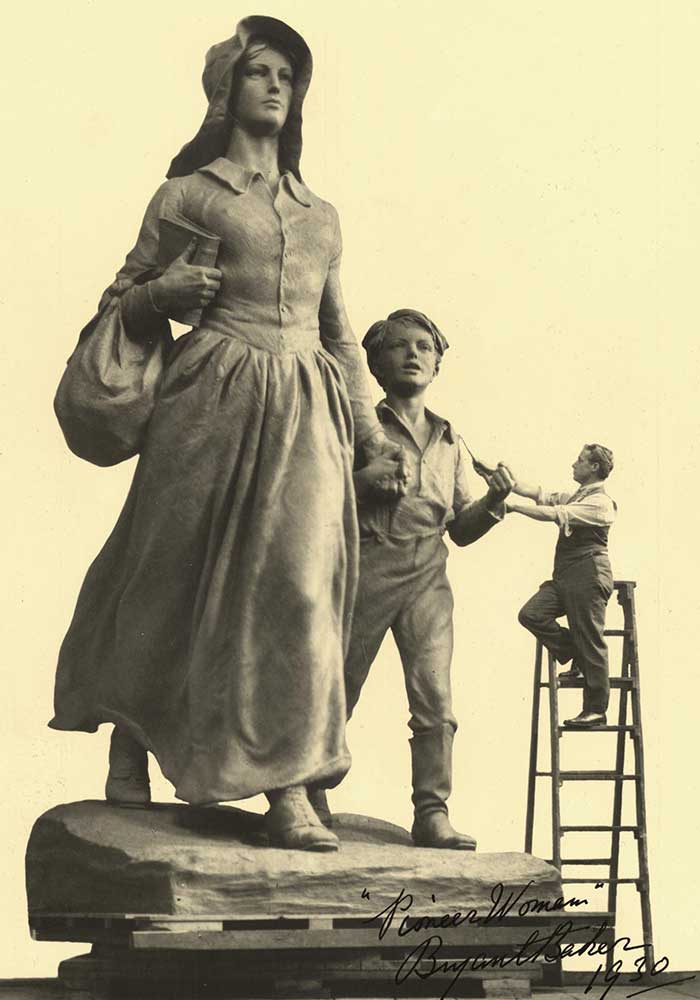
PIONEER WOMAN.
Executed in 1929 by English-born sculptor Bryant Baker (1881–1970), the Pioneer Woman statue is located in Ponca City, Oklahoma, at Fourteenth and Highland, adjacent to the Pioneer Woman Museum. According to its dedicatory plaque, the sculpture was created "in appreciation of the heroic character of the woman who braved the dangers and endured the hardships incident to the daily life of the pioneer and homesteader in this country." Depicted is a woman with a Bible under her arm, leading her young son bravely, confidently into the future. The twelve-thousand-pound, seventeen-foot-tall, cast-bronze piece stands atop a pyramidal, silverdale-stone base. The entire presentation rises to forty feet.
In 1926–30 Ernest W. Marland, wealthy oilman and future governor of Oklahoma (1935–39), developed the project. In 1926–27 Marland, in cooperation with a New York gallery, held a competition for the statue's design. Twelve prominent artists, including A. Stirling Calder, James Earle Fraser, Maurice Sterne, and H. A. MacNeil, were invited to prepare models. Each received a brief, written description of the concept, two authentic sunbonnets, and a ten-thousand-dollar advance fee. In 1927 the gallery unveiled the models and toured them to New York, Boston, Philadelphia, Pittsburgh, Detroit, Chicago, Minneapolis, St. Paul, Dallas, Fort Worth, Oklahoma City, and Ponca City. At all venues, the public voted. More than 750,000 votes were cast, and Bryant Baker's model, titled "Confidence," won the commission and a $100,000 prize (MacNeil's entry scored second place).
On April 22, 1930, Pioneer Woman was dedicated at its permanent site in Ponca City. Forty thousand guests listened to humorist Will Rogers pay tribute to all pioneers, but especially those of Oklahoma. Pres. Herbert Hoover and Oklahoma-born Secretary of War Patrick J. Hurley spoke by broadcast from the nation's capital.
The twelve models, and a Baker-designed "Pioneer Man" model, are housed at Woolaroc Museum, near Bartlesville. The Pioneer Woman statue and the associated site were deeded to the State of Oklahoma by Marland.








